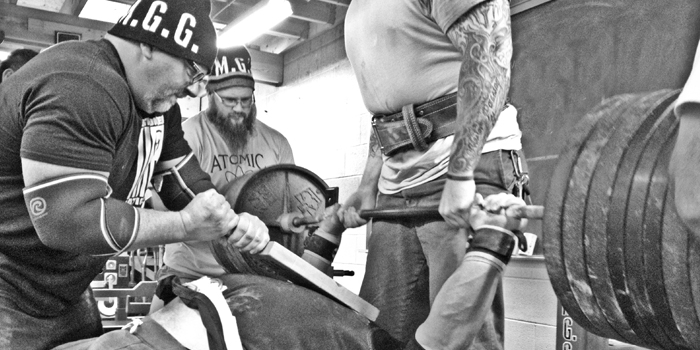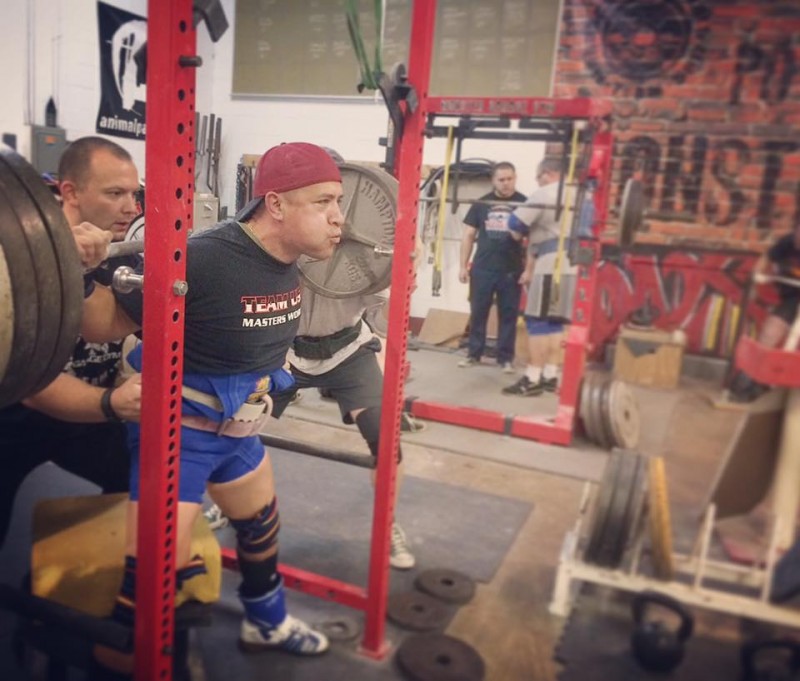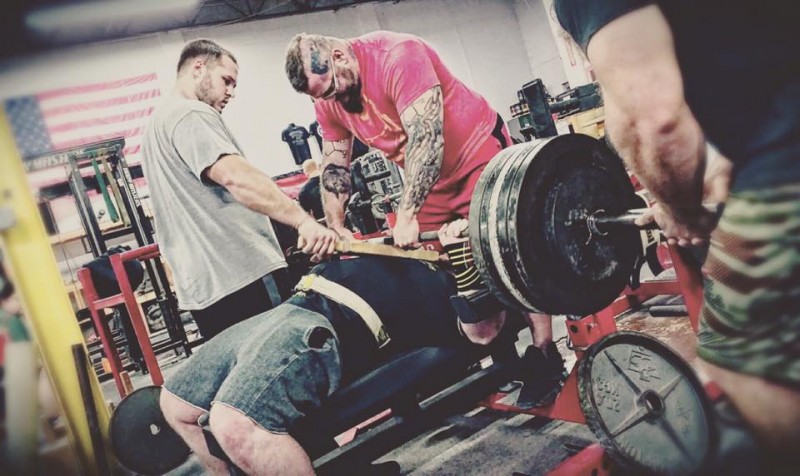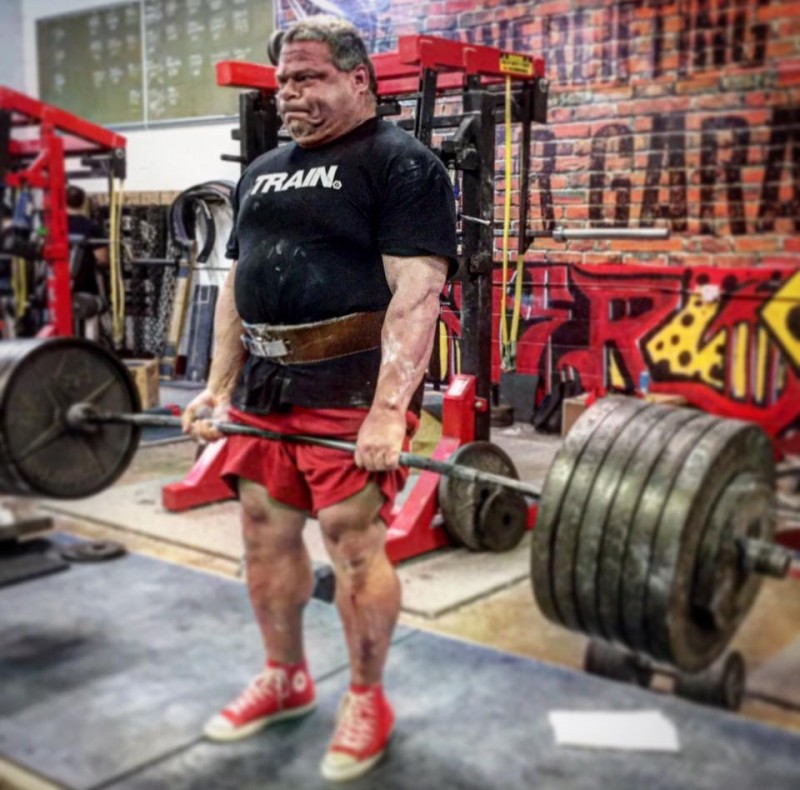
This is a multi-part series on perspectives for the beginner and intermediate powerlifter to consider as they make their initial step in this journey we call powerlifting.
One’s perspective grows as their breadth of experiences deepens. In part one, we discussed at length the rationale behind perspective. Based upon that rationale, we shared the first five, of many, perspectives for the beginner and intermediate powerlifter to consider. The first five perspectives are:
- There are no secrets.
- Sometimes the loudest guy at your gym is only that: the loudest guy.
- "All you can eat" is a fallacy.
- There is only one best way.
- Great lifters are not always great teachers.
MORE: The Gift of Perspective: Things to Know as a New Powerlifter
Read their full descriptions in part one. Let's move onto five more things you should know as a new powerlifter.
6. Meet day should be the easy day.
This sounds so counter-intuitive, because if you are “leaving it all on the platform,” how can meet day be the easiest day? One of the traits I have seen over and over again throughout the years and through my lens of perspective is that the truly successful meet lifters have training sessions that are more demanding and rigorous than any full meet.
Take a look around you some time at the gym, and note the differences in how the really, really good powerlifters spend their time training and how “the others” spend their time. The best will come to the gym prepared with a game plan for the day, and that game plan is part of a larger game plan. They arrive, put on their lifting attire, properly warm-up, and while they warm-up their body, you can see that they are also warming up their mind. These lifters know that there is only this training session and that their next training session will be the training session, and so on and so forth.
In other words, each separate training session, although part of a larger succession of many sessions, is its own entity and it must be treated as the most important of all the sessions. Then, of course, the next one will be the most important, and this cycle repeats itself. The most successful lifters tuck away any smart phone or any nexus to the “fake world,” as they live in the moment in the real world and they take advantage of every single set and rep. They keep the time between sets to no greater of a length of time than would be at a meet, and they work hard. They don’t just work hard overall; they work hard every set and with every rep.
Chances are, if you don’t have the opportunity to train at a powerlifting gym, you might not see this training modeled at all. But know that this is the template for success that my years of perspective have shown me time and again.
Bottom line: If you are really working hard and training like you are supposed to, the nine attempts at the meet will be more about the strategy than the physicality, because you will be more than prepared for the meet, because your training was consistently more rigorous, challenging, and demanding than during the meet.
7. The longer you are in the gym, the better. Right?
As powerlifters, this is a mantra of many. Truth be told, often this is an accurate statement, but when it comes to time in the gym, the far more accurate statement is, QUALITY over QUANTITY. Training for the meet has to in some way replicate the meet, or you are going to be setting yourself up for disappointment.
What you will inevitably see at some gyms is a lifter taking 15 or more minutes between heavy sets “so they can go as heavy as possible.” The reality is, at the big international type meets, the flights are well run, and the loading and spotting are pit-crew fast and efficient. More often than not I see lifters gassed going into another attempt because they have not quite trained beyond the big numbers. Keeping the time in the gym shorter but more intense is a recipe to get the lifter in better physical condition, more appropriately models the meet pace, and best utilizes ones natural testosterone levels — they can only be sustained for a duration (most research indicates this duration to be around 60 minutes). At the big meets (and that is what you will be shooting for eventually), the flights are quick and lots of folks bomb because the judging is the real deal.
Bottom line: If you are taking more time between sets than you would during an actual flight at a highly organized meet, you truly risk leaving weight on that platform as well as losing to a less powerful but more prepared athlete.
8. Do what the biggest guy in the gym does. Right?
I learned long ago that the biggest guy in the gym was not necessarily the one to go to for help or to emulate. I recall training at Frantz Gym in the 1990’s and the Frantz Power Team was chock-full-of amazing powerlifters — from the Godfather Ernie Frantz himself, to multi-time WPC World Powerlifting Champion Bill Nichols, the amazing Paul Urchick, and others.
Having said that, I often found myself watching and studying multi-time world champion Stephanie Van De Weghe. Her lifting, like Bill’s and Paul’s and many others, was flawless and truly inspiring. Stephanie at the time was a 165-pounder squatting 700 pounds in the gym on a routine basis, and watching her train was like being at a technique clinic each weekend. I think the same can be said in many gyms where the best lifter is not necessarily the biggest, but pound-for-pound is simply the best. Additionally, that lifter to study might be genetically average, but they have learned how to get every ounce of power out of their body without being a genetic phenomenon.
I recall an interview with bodybuilding legend Tom Platz. Tom was known for his unearthly leg development. Tom would say, “Don’t come to me for leg advice; my quads grow just walking into the gym. Look at the guy with no leg genetics that has big, muscular legs. That is the guy to learn from.”
So sometimes the average Joe who is a true technician is the guy to watch. The average Joe might not have the unreal numbers, but he/she is still a solid lifter and has become that way not from freakish genetics, but from knowing what the heck they are doing.
Now and again I run into Brandon Smitley. Brandon is not the biggest guy in the world — in fact, he is not even the biggest guy in his personal gym. But at 132 pounds bodyweight, Brandon’s 567-pound raw squat record and 10-times body weight raw total means he is the guy you want to watch when you are training. Yes, bigger is sometimes better, but as a beginner to intermediate lifter, keep in mind this irrefutable truth: BETTER is ultimately BETTER.
9. If you didn’t do it in training, don’t try it during the meet.
If I had a dollar for every time I saw a newer-to-the-competition-scene lifter fall into this trap; I would be living in Jamaica with a lemonade in one hand and wad of cash in the other. Yes, get those elitefts knee wraps, but get them months prior to the meet, train in them, train in them a lot, and then compete in them. Modifying the stance of your squat, your bench grip, or your pull are all things to experiment with, but not at the meet when you just missed a lift, and some big guy says, “Hey, your stance is too narrow, go wider on your next attempt.”
The harsh reality is, if your stance is truly too narrow, it is too late to fix that while in the heat of competition. Stick with the game plan and fix these things after the meet. With regard to the knee wraps, wear what you wore in training and have who you had wrap you in training at the meet. If you are still new to the meet, the whole meet is a presentation of unknowns to you, and adding to those unknowns by removing the constants that you at least do know is a recipe for disaster.
10. If you are not going for all-out numbers, why compete. Yes or no?
Again, perspective gives us the ability to look back and see things, both good and bad, repeat themselves. Do the big boys and girls who are at the top of the sport sometimes open with max effort weights? Yes, but know that their goals are different than yours. They have already won everything and now it is just them against the history books, so going 110% and knowing they could bomb might be the risk to take to reach that bucket list all-time record. The lifters I am talking about are the one-half-of-one-percent competitors at the tiptop of the power pyramid. But because they are at the top, those are the ones the newer lifters want to emulate.
Remember, to get to be the one-half-of-one-percent lifter, they had to start right where you are, and that is at the beginning. So don’t so much do what they do now; do what they did to get to where they are now.
Seasoned lifters who have been around the sport for a few decades watch a phenomenon year after year after year: newer lifters open way too heavy, and before the meet could even start, they are done and left wondering what it would be like to get to the bench portion of a meet. In my personal opinion, the opener for the newer to the intermediate lifter—and the vast majority of seasoned lifters—should be a weight that is actually your last big warm-up.
Look through Ed Coan’s book and see how many times he bombed out. It is a pretty darn small number, and he was the best. If a living legend can pick an opener he can manage on even a sub-par day; it would probably behoove you to do the same. At the end of the day, nobody cares what your opener was; they want to know what your final lift was. Having said that, if you bomb with an opener, instead of folks looking at your total, they will be looking at you thinking, “Why on earth did they open with that weight?”
Said another way: openers aren’t meant to impress. They are meant to be stepping-stones to second attempts. Those second attempts then set you up for your third big attempt.
Stay tuned for part three in this series.













